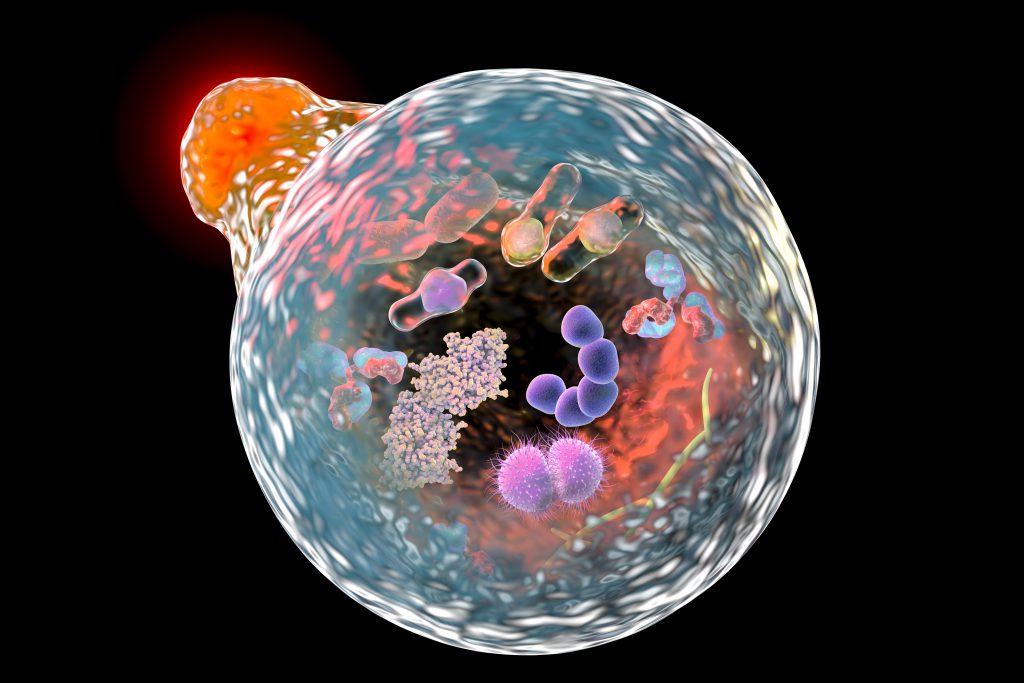Veröffentlicht 17. November 2016 von Stephanie Hanel
Recycling at the cellular level: autophagy as an evolutionary self-cleaning program

No, he’s not an individual you might have predicted would be so successful, and yes, this Nobel Laureate says of himself: “I’m not very competitive, so I always look for a new subject to study, even if it’s not so popular.” And lo and behold: his field of research is booming. “The field has become one of the most intensely studied areas of biomedical research, with a remarkable increase in the number of publications since the early 2000s,” the Nobel Prize Committee wrote in its statement. During his first press conference after learning that he had won the Nobel Prize in Physiology or Medicine, Yoshinori Ohsumi spoke to many scientists from his heart when he stressed the importance of basic research. And he has a piece of advice for young scientists: “I’d like to tell young people that not all can be successful in science, but it’s important to rise to the challenge.”
The 71-year-old Japanese researcher knows what he’s talking about. He was already in his forties when he finally got his own laboratory and an opportunity to start his pioneering experiments. His work, described as “elegant” by many colleagues and by the Nobel Prize Committee, shows that basic research need not be a shot in the dark but a beeline to new findings.
The term autophagy (ancient Greek for “self-consuming”) was coined by another Nobel Laureate: Christian de Duve, a now deceased Belgian cell researcher who, together with others, discovered the lysosome and its importance in cells. He was awarded the Nobel Prize in 1974 for his work. A lysosome is an active organelle in cells that digests cell components which are no longer needed as well as bacteria. At the time, however, it was still not known how substances are transported into lysosomes or how cells actually recognize what should be discarded. It was already known that cells can produce membrane-bound vacuoles to mop up waste components. However, membranous vacuoles are too short-lived to study in detail. Today we know that an autophagosome, a type of membrane-bound vacuole, exists for only around 10 to 20 minutes before fusing with a lysosome.

Autophagy processes occur in a wide range of tissues in the human body, and autophagosomes are found, for example, in microorganisms such as amoebas and flagellates, as well as in insects and frogs. This suggests that autophagy is not just one of many processes in cells but such a vital process that it has been conserved in all living creatures during the course of evolution.
Ohsumi began experimenting with yeasts. From the very outset he had to contend with the problem that autophagosomes are much too small to observe. He therefore used a trick which provided proof and was later useful for further specification. He suspected that cellular waste in yeasts is transported in vacuoles (the equivalent of lysosomes) and that waste would accumulate in them if the degradation process were blocked. This suspicion proved correct. Ōsumi and his team determined the conditions under which autophagosomes function, i.e. which factors activate and deactivate them.

Years of diverse experiments followed. The autophagy mechanism involves many different processes. Autophagosomes become more active under the influence of stress or toxins. If there is a shortage of nutrients, they can digest parts of the cell that are not needed in order to preserve the system as a whole. They make room by disposing of non-essential and damaged components. They scavenge toxins and invading microorganisms and also play a role in embryonic development in the womb. Autophagy is therefore not just a waste disposal program but also a self-defence strategy; ultimately, it is even involved in the development of new life.
It is obviously of inestimable value to understand these processes; after all, when they go awry they can lead to pathological states. Ohsumi’s laboratory has conducted innumerable experiments with cloned yeasts in which individual genes were knocked out in order to identify those DNA segments that are responsible for autophagy. In 1993, he published his findings: there are 15 key genes. Armed with this knowledge, the international research community has since been able to shed light on many aspects of this natural process.